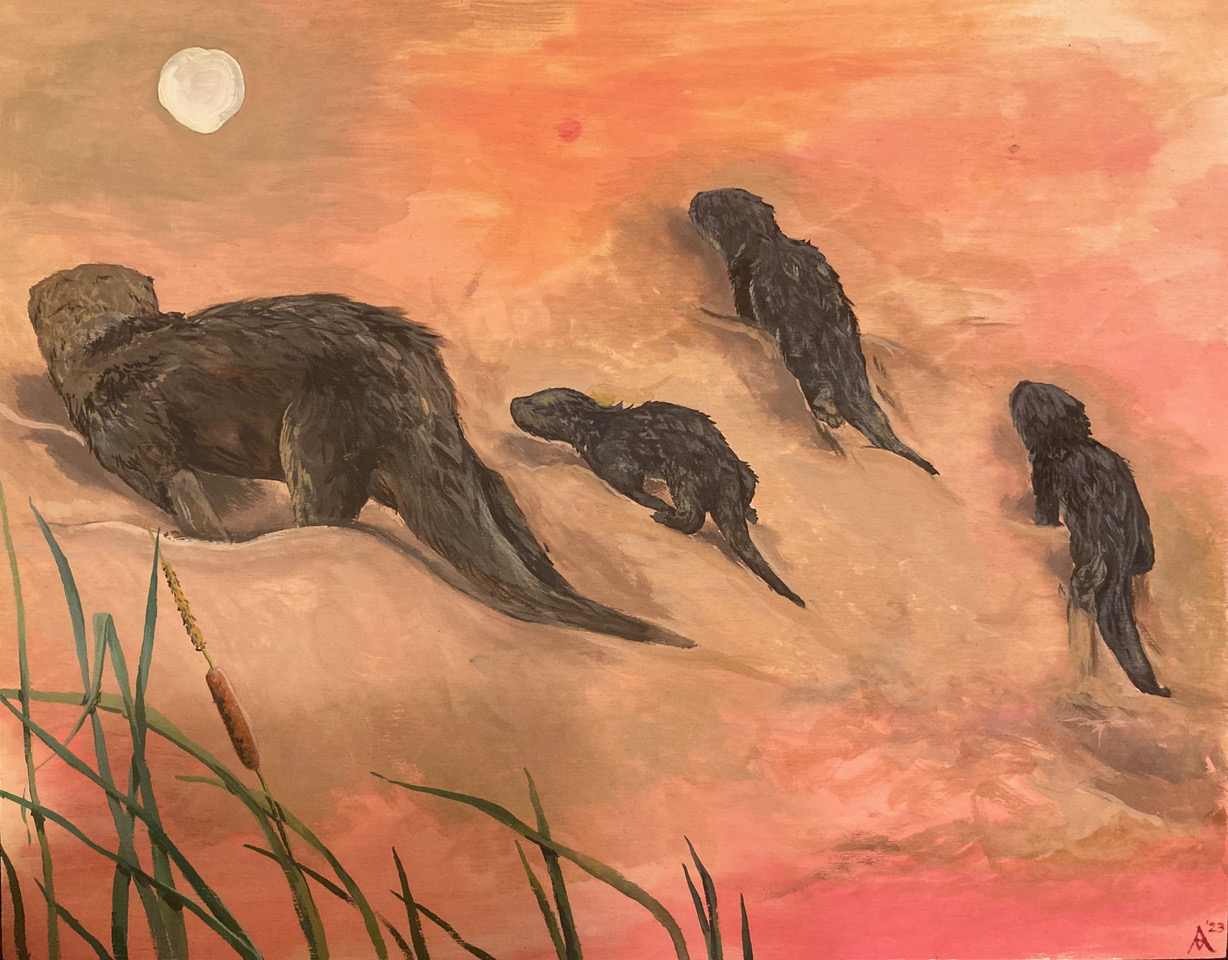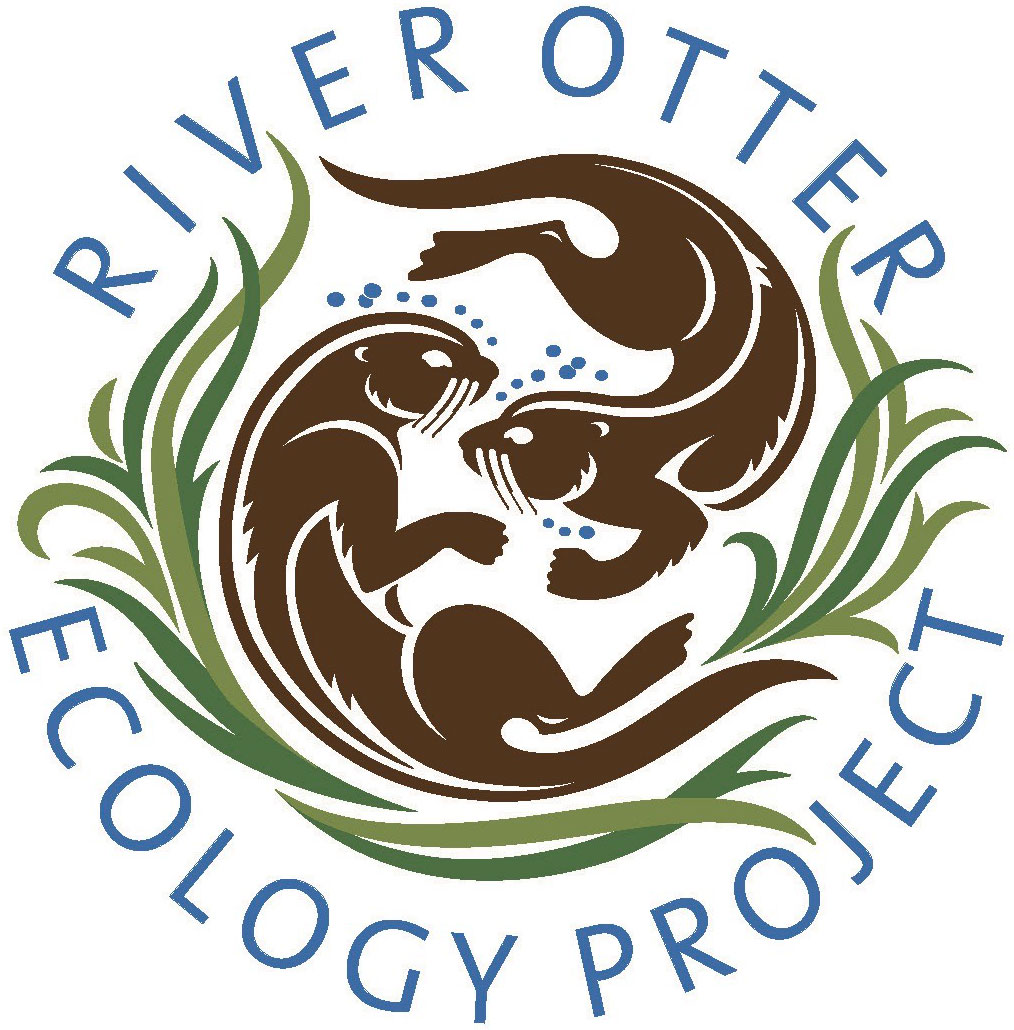Story and Illustration by Amanda Lipari Maxson, Tufts University, 2023 ROEP Field Intern

In class, science is all about measured language and reading the literature… In the field? It’s about screaming gophers. See, I didn’t always know it was this way –in fact if you had asked me what my summer was going to consist of before I started this internship, screaming gophers certainly wouldn’t have occurred to me, and pelican gallows humor might not have been high on my list either. Now that I have done it? These are two of my very favorite takeaways, but I’ll get back to them.
One of the things that excited me most about working with River Otter Ecology Project this summer was becoming more familiar with surroundings I had been exposed to all my life. I was enamored by the idea of “knowing” a place through a sort of ritual revisitation. The idea that, upon visiting sites once a week for the whole summer, I would surpass my experience as a casual viewer, and really understand the processes of these ecosystems. I hoped that I would be able to notice the changes and anticipate which ones might be on the horizon. I don’t necessarily think this was wrong, but I can now reflect on those early aspirations, and say that they were steeped in a certain sort of naïveté. I thought that going to these places; Bass Lake, Abbotts Lagoon, Tennessee Beach, as a field ecologist, would be transformative. And honestly? It was, just not in the conclusive way that I expected. Like much of science, despite hours of data collection and observation, all I have are more questions. I do feel like camera trapping has allowed me to see behind the scenes, to stick my nose into a level of existence which was foreign to me, that level being: two feet from the ground. As a studio artist, I am incredibly sight-driven, and even if I know for certain that something is true, it is often difficult for me to internalize that knowledge without visual proof. Camera trapping created a new frontier of visualization, opening my eyes to the habitants of those little tunnels we see in the grass, or that crumbly scat that we walk past for weeks. Now, walking to my sites I imagine all of those creatures who slow to let me pass, or freeze just out of sight, I recognize that what I see is not all there is. Now of course we all know that on some level, but this summer if I have come to know anything for sure, it is that I am a visitor with an extremely limited scope of what is going on.
On field days, I came to the trails with an extra level of attention to detail, scanning constantly, even with my limited scope. Whether I was looking for scat and tracks, an otter head bobbing among the ripples, pelicans (dead or alive), I always saw something new. I am sure there have always been anomalies to what I had accepted as fact in the natural world around here, but this summer opened my eyes to them. Or in some cases, they demanded to be seen.
For some background, Terence and I have been working on a research project out at Abbott’s lagoon this summer. River otters have been predating the brown pelicans there, and as the number of predated grew, River Otter Ecology Project was able to get local funding to study the phenomenon. What that has boiled down to is us searching for pelicans, dead and alive. Using a GIS surveying app, we have marked and photographed pelican carcasses, surveying Abbott’s Lagoon in four transects every 10 days or so. This led to some interesting conversations… Like, why carrion beetle larvae seem extra creepy, or why seeing an intact pelican spine is a high point in the day. This is also where the gallows humor comes in. Because of the nature of our study, finding a carcass, something which might typically be seen as a sad or unwanted experience, is something anticipated, leading to some confusing feelings of joy and jubilation at coming upon the evidence of bird demise. Now I don’t know about you, but for me, this strange confluence of emotions has needed to express itself through humor. I am not quite sure the world is ready for pelican gallows humor. I am also not sure how I got so far down this rabbit hole about humor, so let’s get back on track.
Terence and I were heading back from our first or second day of surveying, walking the trail back to the parking lot. He was leading the way and I followed behind, a little tired, but excited at having seen otters and both live and predated pelicans already. As I reflected on our good (again, good?) fortune, I was snapped out of it by a ferocious squeaking! Slightly alarmed, and very curious, I looked around until my eyes landed down at the trail in front of us. A lone gopher stood in the trail, jaws open wide, giving us what for. It was hard to take him seriously, the little fellow, but he demanded respect. He appeared to think himself a tiny lion. It seemed so uncharacteristic to see such a small creature standing up to a human like that, much less two. He heralded a summer of embracing the unknowns we can find in the wild spaces around us. As this little gopher became infamous in our survey conversations, he also paved the way for many of the discoveries I made this summer about what it means to let go of expectations, and approach the natural world with humility and wonder.
